Click on an image for detailed information
Click on a column heading to sort in ascending or descending order

My
List |
Addition Date
|
Target
|
Mission
|
Instrument
|
Size
|

|
2018-08-14 |
Sol (our sun)
|
SDO
|
Atmosphere Imaging Assembly
|
1800x1800x3 |
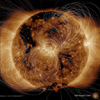
|
-
PIA22662:
-
Magnetic Field Portrayed

Full Resolution:
TIFF
(8.707 MB)
JPEG
(757.2 kB)
|

|
2018-08-20 |
Sol (our sun)
|
SDO
|
Atmosphere Imaging Assembly
|
1498x1500x3 |
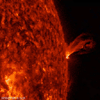
|
-
PIA22673:
-
Twisting Outburst

Full Resolution:
TIFF
(3.898 MB)
JPEG
(196.1 kB)
|

|
2018-09-03 |
Sol (our sun)
|
SDO
|
Atmosphere Imaging Assembly
|
1780x1750x3 |
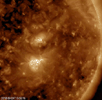
|
-
PIA22680:
-
New Active Region Grows Up

Full Resolution:
TIFF
(6.915 MB)
JPEG
(212.3 kB)
|

|
2018-09-17 |
Sol (our sun)
|
SDO
|
Atmosphere Imaging Assembly
|
1500x1500x3 |
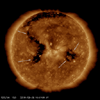
|
-
PIA22722:
-
Emerging Coronal Hole

Full Resolution:
TIFF
(3.545 MB)
JPEG
(135.6 kB)
|

|
2018-09-17 |
Sol (our sun)
|
SDO
|
Atmosphere Imaging Assembly
|
1800x1800x3 |
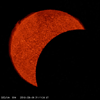
|
-
PIA22723:
-
Double Lunar Transit

Full Resolution:
TIFF
(2.063 MB)
JPEG
(142 kB)
|

|
2018-09-24 |
Sol (our sun)
|
SDO
|
Atmosphere Imaging Assembly
|
1800x1800x3 |
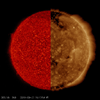
|
-
PIA22724:
-
Two Wavelengths, Two Different Images

Full Resolution:
TIFF
(5.585 MB)
JPEG
(262.9 kB)
|

|
2018-10-17 |
Sol (our sun)
|
SDO
|
Atmosphere Imaging Assembly
|
1668x1668x3 |
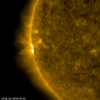
|
-
PIA18139:
-
Sole Active Region in Profile

Full Resolution:
TIFF
(4.272 MB)
JPEG
(150.1 kB)
|

|
2018-10-29 |
Sol (our sun)
|
SDO
|
Atmosphere Imaging Assembly
|
1770x1765x3 |
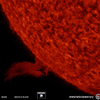
|
-
PIA18140:
-
Eruptive Prominence

Full Resolution:
TIFF
(3.695 MB)
JPEG
(240.5 kB)
|

|
2018-11-12 |
Sol (our sun)
|
SDO
|
Atmosphere Imaging Assembly
|
1445x1445x3 |
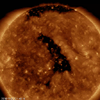
|
-
PIA18141:
-
Central Coronal Hole

Full Resolution:
TIFF
(4.566 MB)
JPEG
(155.4 kB)
|

|
2018-11-14 |
Sol (our sun)
|
SDO
|
Atmosphere Imaging Assembly
|
1628x1587x3 |
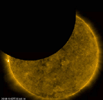
|
-
PIA18142:
-
SDO Observes a Partial Lunar Eclipse

Full Resolution:
TIFF
(3.473 MB)
JPEG
(139.1 kB)
|

|
2018-11-19 |
Sol (our sun)
|
SDO
|
Atmosphere Imaging Assembly
|
1800x1800x3 |
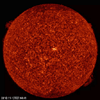
|
-
PIA18143:
-
Opposing Solar Prominences

Full Resolution:
TIFF
(5.168 MB)
JPEG
(372.5 kB)
|

|
2018-12-05 |
Sol (our sun)
|
SDO
|
Atmosphere Imaging Assembly
|
1500x1500x3 |
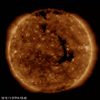
|
-
PIA18144:
-
Reappearing Coronal Hole

Full Resolution:
TIFF
(4.192 MB)
JPEG
(145.1 kB)
|

|
2018-12-11 |
Sol (our sun)
|
SDO
|
Atmosphere Imaging Assembly
|
1650x1650x3 |
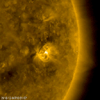
|
-
PIA21211:
-
Solar Active Region's Cameo Appearance

Full Resolution:
TIFF
(4.752 MB)
JPEG
(146 kB)
|

|
2018-12-24 |
Sol (our sun)
|
SDO
|
Atmosphere Imaging Assembly
|
1800x1800x3 |
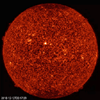
|
-
PIA21212:
-
Small Prominences

Full Resolution:
TIFF
(5.751 MB)
JPEG
(400 kB)
|

|
2019-02-19 |
Sol (our sun)
|
SDO
|
Atmosphere Imaging Assembly
|
1650x1540x3 |
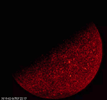
|
-
PIA21213:
-
Spring 2019 Eclipse Season Arrives

Full Resolution:
TIFF
(2.94 MB)
JPEG
(152.9 kB)
|

|
2019-03-04 |
Sol (our sun)
|
SDO
|
Atmosphere Imaging Assembly
|
1520x1500x3 |
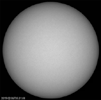
|
-
PIA21218:
-
Spotless February

Full Resolution:
TIFF
(1.689 MB)
JPEG
(190.5 kB)
|

|
2019-03-11 |
Sol (our sun)
|
SDO
|
Atmosphere Imaging Assembly
|
1500x1414x3 |
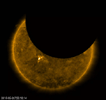
|
-
PIA21905:
-
Criss-Crossing Lunar Transit

Full Resolution:
TIFF
(2.274 MB)
JPEG
(92.56 kB)
|

|
2007-04-27 |
Sol (our sun)
|
Solar TErrestrial RElations Observatory (STEREO)
|
SECCHI/Extreme Ultraviolet Imaging Telescope
|
1920x1080x3 |
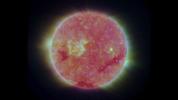
|
-
PIA09320:
-
Full Disk Image of the Sun, March 26, 2007
Full Resolution:
TIFF
(6.23 MB)
JPEG
(110.4 kB)
|

|
2007-04-27 |
Sol (our sun)
|
Solar TErrestrial RElations Observatory (STEREO)
|
SECCHI/Extreme Ultraviolet Imaging Telescope
|
1920x1080x3 |
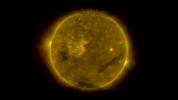
|
-
PIA09321:
-
Full Disk Image of the Sun, March 26, 2007 (Anaglyph)
Full Resolution:
TIFF
(6.23 MB)
JPEG
(91.3 kB)
|

|
2007-04-27 |
Sol (our sun)
|
Solar TErrestrial RElations Observatory (STEREO)
|
SECCHI/Extreme Ultraviolet Imaging Telescope
|
1920x1080x3 |
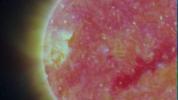
|
-
PIA09322:
-
Close-up View of an Active Region of the Sun, March 23, 2007
Full Resolution:
TIFF
(6.23 MB)
JPEG
(116 kB)
|

|
2007-04-27 |
Sol (our sun)
|
Solar TErrestrial RElations Observatory (STEREO)
|
SECCHI/Extreme Ultraviolet Imaging Telescope
|
1920x1080x3 |
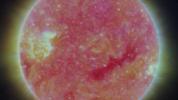
|
-
PIA09324:
-
Closer View of the Equatorial Region of the Sun, March 24, 2007
Full Resolution:
TIFF
(6.23 MB)
JPEG
(129.6 kB)
|

|
2007-04-27 |
Sol (our sun)
|
Solar TErrestrial RElations Observatory (STEREO)
|
SECCHI/Extreme Ultraviolet Imaging Telescope
|
1920x1080x3 |
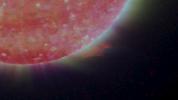
|
-
PIA09326:
-
Right Limb of the South Pole of the Sun, March 18, 2007
Full Resolution:
TIFF
(6.23 MB)
JPEG
(85.81 kB)
|

|
2007-04-27 |
Sol (our sun)
|
Solar TErrestrial RElations Observatory (STEREO)
|
SECCHI/Extreme Ultraviolet Imaging Telescope
|
1920x1080x3 |
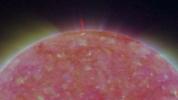
|
-
PIA09328:
-
North Pole of the Sun, March 20, 2007
Full Resolution:
TIFF
(6.23 MB)
JPEG
(94.86 kB)
|

|
2007-04-27 |
Sol (our sun)
|
Solar TErrestrial RElations Observatory (STEREO)
|
SECCHI/Extreme Ultraviolet Imaging Telescope
|
1920x1080x3 |
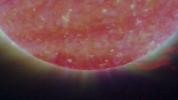
|
-
PIA09330:
-
South Pole of the Sun, March 20, 2007
Full Resolution:
TIFF
(6.23 MB)
JPEG
(94.62 kB)
|

|
2007-04-27 |
Sol (our sun)
|
Solar TErrestrial RElations Observatory (STEREO)
|
SECCHI/Extreme Ultraviolet Imaging Telescope
|
1920x1080x3 |
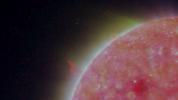
|
-
PIA09332:
-
Left Limb of North Pole of the Sun, March 20, 2007
Full Resolution:
TIFF
(6.23 MB)
JPEG
(84.33 kB)
|

|
2007-04-27 |
Sol (our sun)
|
Solar TErrestrial RElations Observatory (STEREO)
|
SECCHI/Extreme Ultraviolet Imaging Telescope
|
1920x1080x3 |
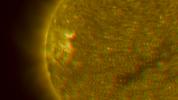
|
-
PIA09323:
-
Close-up View of an Active Region of the Sun, March 23, 2007 (Anaglyph)
Full Resolution:
TIFF
(6.23 MB)
JPEG
(145.6 kB)
|

|
2007-04-27 |
Sol (our sun)
|
Solar TErrestrial RElations Observatory (STEREO)
|
SECCHI/Extreme Ultraviolet Imaging Telescope
|
1920x1080x3 |
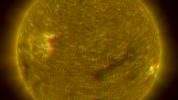
|
-
PIA09325:
-
Closer View of the Equatorial Region of the Sun, March 24, 2007 (Anaglyph)
Full Resolution:
TIFF
(6.23 MB)
JPEG
(169.6 kB)
|

|
2007-04-27 |
Sol (our sun)
|
Solar TErrestrial RElations Observatory (STEREO)
|
SECCHI/Extreme Ultraviolet Imaging Telescope
|
1920x1080x3 |
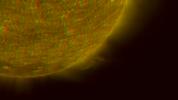
|
-
PIA09327:
-
Right Limb of the South Pole of the Sun, March 18, 2007 (Anaglyph)
Full Resolution:
TIFF
(6.23 MB)
JPEG
(99.1 kB)
|

|
2007-04-27 |
Sol (our sun)
|
Solar TErrestrial RElations Observatory (STEREO)
|
SECCHI/Extreme Ultraviolet Imaging Telescope
|
1920x1080x3 |
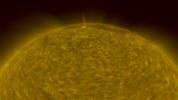
|
-
PIA09329:
-
North Pole of the Sun, March 20, 2007 (Anaglyph)
Full Resolution:
TIFF
(6.23 MB)
JPEG
(126.2 kB)
|

|
2007-04-27 |
Sol (our sun)
|
Solar TErrestrial RElations Observatory (STEREO)
|
SECCHI/Extreme Ultraviolet Imaging Telescope
|
1920x1080x3 |
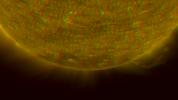
|
-
PIA09331:
-
South Pole of the Sun, March 20, 2007 (Anaglyph)
Full Resolution:
TIFF
(6.23 MB)
JPEG
(114.9 kB)
|

|
2007-04-27 |
Sol (our sun)
|
Solar TErrestrial RElations Observatory (STEREO)
|
SECCHI/Extreme Ultraviolet Imaging Telescope
|
1920x1080x3 |
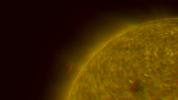
|
-
PIA09333:
-
Left Limb of North Pole of the Sun, March 20, 2007 (Anaglyph)
Full Resolution:
TIFF
(6.23 MB)
JPEG
(89.44 kB)
|

|
2004-03-08 |
|
Spitzer Space Telescope
|
IRAC
Multiband Imaging Photometer (MIPS)
|
2262x1899x3 |
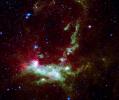
|
-
PIA05517:
-
Star Formation in Henize 206
Full Resolution:
TIFF
(8.739 MB)
JPEG
(428.1 kB)
|

|
2003-09-03 |
|
Spitzer Space Telescope
|
IRAC
|
1600x2000x3 |

|
-
PIA04724:
-
SIRTF "Aliveness Test" Image
Full Resolution:
TIFF
(2.686 MB)
JPEG
(162.7 kB)
|

|
2003-12-18 |
|
Spitzer Space Telescope
|
IRAC
|
1142x939x3 |
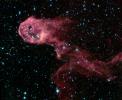
|
-
PIA04934:
-
Dark Globule in IC 1396 (IRAC)
Full Resolution:
TIFF
(2.755 MB)
JPEG
(172.5 kB)
|

|
2003-12-18 |
|
Spitzer Space Telescope
|
MIPS
IRAC
|
2332x1616x3 |
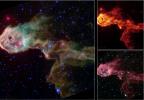
|
-
PIA04935:
-
Multi-Wavelength Views of Protostars in IC 1396
Full Resolution:
TIFF
(9.179 MB)
JPEG
(359.4 kB)
|

|
2003-12-18 |
|
Spitzer Space Telescope
|
IRAC
|
1364x1038x3 |
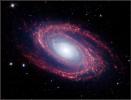
|
-
PIA04936:
-
Short-Wavelength Infrared Views of Messier 81
Full Resolution:
TIFF
(3.273 MB)
JPEG
(139.3 kB)
|

|
2003-12-18 |
|
Spitzer Space Telescope
|
MIPS
IRAC
|
2286x2334x3 |

|
-
PIA04937:
-
Multi-Wavelength Views of Messier 81
Full Resolution:
TIFF
(12.2 MB)
JPEG
(516.4 kB)
|

|
2003-12-18 |
|
Spitzer Space Telescope
|
MIPS
|
1108x2148x3 |

|
-
PIA04938:
-
Long-Wavelength Infrared Views of Messier 81
Full Resolution:
TIFF
(3.404 MB)
JPEG
(164.3 kB)
|

|
2003-12-18 |
|
Spitzer Space Telescope
|
IRAC
|
1020x643x3 |
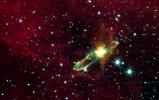
|
-
PIA04939:
-
Embedded Outflows from Herbig-Haro 46/47
Full Resolution:
TIFF
(1.772 MB)
JPEG
(79.87 kB)
|

|
2003-12-18 |
|
Spitzer Space Telescope
|
Infrared Spectrograph (IRS)
|
2872x2056x3 |
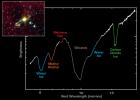
|
-
PIA04940:
-
Spectrum from Embedded Star in Herbig-Haro 46/47
Full Resolution:
TIFF
(2.417 MB)
JPEG
(271.3 kB)
|

|
2003-12-18 |
|
Spitzer Space Telescope
|
Infrared Spectrograph (IRS)
|
2912x2040x3 |
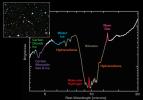
|
-
PIA04941:
-
Spectrum from Faint Galaxy IRAS F00183-7111
Full Resolution:
TIFF
(2.3 MB)
JPEG
(316.7 kB)
|

|
2003-12-18 |
|
Spitzer Space Telescope
|
MIPS
|
1424x944x3 |
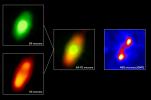
|
-
PIA04942:
-
Circumstellar Disk Around Fomalhaut
Full Resolution:
TIFF
(789.1 kB)
JPEG
(58.51 kB)
|

|
2003-12-18 |
|
Spitzer Space Telescope
|
MIPS
|
658x430x3 |
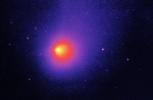
|
-
PIA04943:
-
Comet Schwassmann-Wachmann I
Full Resolution:
TIFF
(611.8 kB)
JPEG
(26.98 kB)
|

|
2004-01-13 |
Tarantula Nebula
|
Spitzer Space Telescope
|
IRAC
|
1384x908x3 |
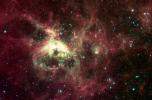
|
-
PIA05062:
-
The Tarantula Nebula
Full Resolution:
TIFF
(3.778 MB)
JPEG
(167.3 kB)
|

|
2004-02-12 |
Cepheus
|
Spitzer Space Telescope
|
IRAC
|
1103x1293x3 |

|
-
PIA05266:
-
Spitzer Telescope Sends Rose for Valentine's Day
Full Resolution:
TIFF
(2.124 MB)
JPEG
(88.71 kB)
|

|
2004-04-13 |
|
Spitzer Space Telescope
|
IRAC
|
3652x1936x3 |
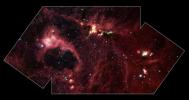
|
-
PIA05732:
-
Nursery of Giants
Full Resolution:
TIFF
(13.19 MB)
JPEG
(548.3 kB)
|

|
2004-04-13 |
|
Spitzer Space Telescope
|
MIPS
|
2499x779x3 |

|
-
PIA05733:
-
Stormy Clouds of Star Birth
Full Resolution:
TIFF
(3.511 MB)
JPEG
(102.2 kB)
|

|
2004-04-13 |
|
Spitzer Space Telescope
|
IRAC
|
3652x1936x3 |
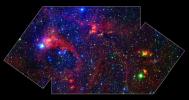
|
-
PIA05734:
-
Spitzer Makes "Invisible" Visible
Full Resolution:
TIFF
(12.89 MB)
JPEG
(935.6 kB)
|

|
2004-04-13 |
|
Spitzer Space Telescope
|
IRAC
Multiband Imaging Photometer (MIPS)
|
3600x2556x3 |
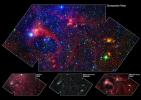
|
-
PIA05735:
-
Star Formation in the DR21 Region (A)
Full Resolution:
TIFF
(17.13 MB)
JPEG
(1.391 MB)
|

|
2004-04-13 |
|
Spitzer Space Telescope
|
IRAC
Multiband Imaging Photometer (MIPS)
|
3588x4224x3 |

|
-
PIA05736:
-
Star Formation in the DR21 Region (B)
Full Resolution:
TIFF
(19.11 MB)
JPEG
(840.7 kB)
|

|
2004-05-11 |
|
Spitzer Space Telescope
|
IRAC
|
1530x776x3 |

|
-
PIA05878:
-
A Natal Microcosm
Full Resolution:
TIFF
(3.336 MB)
JPEG
(98.57 kB)
|

|
2004-05-11 |
|
Spitzer Space Telescope
|
IRAC
|
708x570x3 |
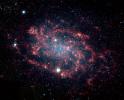
|
-
PIA05879:
-
Dissection of a Galaxy
Full Resolution:
TIFF
(1.009 MB)
JPEG
(75.25 kB)
|

|
2004-05-27 |
RCW 49 Nebula
|
Spitzer Space Telescope
|
IRAC
|
1520x1520x3 |
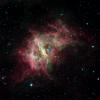
|
-
PIA05989:
-
Stellar Jewels Shine in New Spitzer Image
Full Resolution:
TIFF
(5.235 MB)
JPEG
(195.4 kB)
|

|
2004-05-27 |
|
Spitzer Space Telescope
|
|
1600x1200x3 |
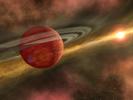
|
-
PIA05988:
-
Out of the Dust, A Planet is Born (Artist Concept)
Full Resolution:
TIFF
(4.995 MB)
JPEG
(111.9 kB)
|

|
2004-06-01 |
Centaurus A
|
Spitzer Space Telescope
|
IRAC
|
1627x1227x3 |
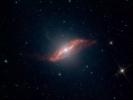
|
-
PIA06007:
-
The Making of a Galactic Parallelogram
Full Resolution:
TIFF
(4.383 MB)
JPEG
(149.7 kB)
|

|
2004-06-28 |
NGC 7331
|
Spitzer Space Telescope
|
IRAC
|
1239x805x3 |
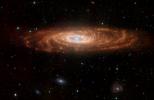
|
-
PIA06322:
-
Morphology of Our Galaxy's 'Twin'
Full Resolution:
TIFF
(2.02 MB)
JPEG
(88.38 kB)
|

|
2005-07-27 |
|
Spitzer Space Telescope
|
Infrared Spectrograph (IRS)
|
2361x1506x3 |
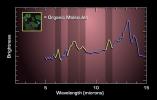
|
-
PIA03537:
-
Charting Ingredients for Life
Full Resolution:
TIFF
(10.68 MB)
JPEG
(174.6 kB)
|

|
2004-08-09 |
NGC 246
|
Spitzer Space Telescope
|
IRAC
|
1018x1018x3 |
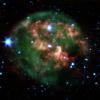
|
-
PIA06755:
-
Ring of Stellar Death
Full Resolution:
TIFF
(2.561 MB)
JPEG
(98.24 kB)
|

|
2005-07-27 |
|
Spitzer Space Telescope
|
|
2526x1827x3 |
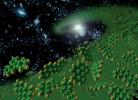
|
-
PIA03538:
-
Ingredients for Life (Artist's Concept)
Full Resolution:
TIFF
(13.86 MB)
JPEG
(575.9 kB)
|

|
2004-09-07 |
|
Spitzer Space Telescope
|
IRAC
|
1125x1125x3 |
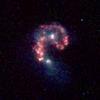
|
-
PIA06853:
-
Life at the Intersection of Colliding Galaxies
Full Resolution:
TIFF
(2.824 MB)
JPEG
(96.35 kB)
|

|
2004-09-07 |
|
Spitzer Space Telescope
|
IRAC
|
1125x1125x3 |
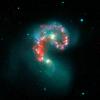
|
-
PIA06854:
-
Fire within the Antennae Galaxies
Full Resolution:
TIFF
(2.308 MB)
JPEG
(76.5 kB)
|

|
2004-10-06 |
|
Spitzer Space Telescope
|
IRAC
|
1090x1090x3 |
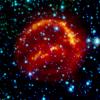
|
-
PIA06910:
-
Kepler's Supernova Remnant: A View from Spitzer Space Telescope
Full Resolution:
TIFF
(2.167 MB)
JPEG
(110.8 kB)
|

|
2004-10-12 |
|
Spitzer Space Telescope
|
IRAC
|
602x602x3 |
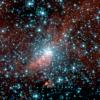
|
-
PIA06928:
-
Spitzer Digs Up Galactic Fossil
Full Resolution:
TIFF
(1.089 MB)
JPEG
(63.25 kB)
|

|
2004-10-18 |
|
Spitzer Space Telescope
|
IRAC
|
3000x2400x3 |
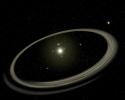
|
-
PIA06939:
-
The Rocky World of Young Planetary Systems (Artist Concept)
Full Resolution:
TIFF
(4.159 MB)
JPEG
(301.4 kB)
|

|
2004-12-09 |
|
Spitzer Space Telescope
|
|
3000x1688x3 |
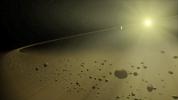
|
-
PIA07096:
-
A Distant Solar System (Artist's Concept)
Full Resolution:
TIFF
(7.518 MB)
JPEG
(308.1 kB)
|

|
2004-12-09 |
|
Spitzer Space Telescope
|
|
3000x1688x3 |
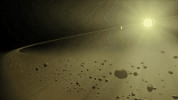
|
-
PIA07097:
-
A Distant Solar System (Artist's Concept Animation)

Full Resolution:
|

|
2004-12-09 |
|
Spitzer Space Telescope
|
|
1386x956x3 |
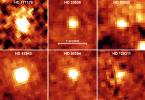
|
-
PIA07098:
-
Is There Anybody Home?
Full Resolution:
TIFF
(1.3 MB)
JPEG
(126 kB)
|

|
2004-12-09 |
|
Spitzer Space Telescope
|
|
1364x1024x3 |
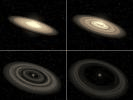
|
-
PIA07099:
-
The Evolution of a Planet-Forming Disk (Artist's Concept Animation)

Full Resolution:
TIFF
(4.195 MB)
JPEG
(75.87 kB)
|

|
2005-01-10 |
Vega
|
Spitzer Space Telescope
|
|
3000x2400x3 |
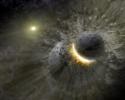
|
-
PIA07217:
-
Massive Smash-up at Vega (Artist Concept)
Full Resolution:
TIFF
(16.11 MB)
JPEG
(332.7 kB)
|

|
2005-01-10 |
Vega
|
Spitzer Space Telescope
|
MIPS
|
1419x707x3 |
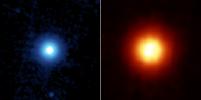
|
-
PIA07218:
-
Tiny Particles, So Far Away
Full Resolution:
TIFF
(1.332 MB)
JPEG
(36.35 kB)
|

|
2005-01-11 |
Encke
|
Spitzer Space Telescope
|
MIPS
|
2154x2154x3 |
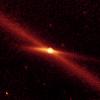
|
-
PIA07222:
-
Riding a Trail of Debris
Full Resolution:
TIFF
(6.884 MB)
JPEG
(215.1 kB)
|

|
2005-01-11 |
|
Spitzer Space Telescope
|
MIPS
|
2364x1172x3 |
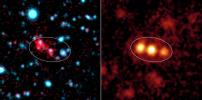
|
-
PIA07220:
-
Mysterious Blob Galaxies Revealed
Full Resolution:
TIFF
(4.293 MB)
JPEG
(173.1 kB)
|

|
2005-01-11 |
|
Spitzer Space Telescope
|
|
3000x2400x3 |
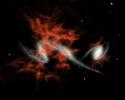
|
-
PIA07221:
-
At the Heart of Blobs (Artist Concept)
Full Resolution:
TIFF
(8.552 MB)
JPEG
(322.3 kB)
|

|
2005-01-12 |
Trifid Nebula
|
Spitzer Space Telescope
|
IRAC
Multiband Imaging Photometer (MIPS)
|
2841x1846x3 |
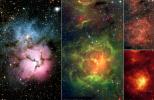
|
-
PIA07225:
-
New Views of a Familiar Beauty
Full Resolution:
TIFF
(15.73 MB)
JPEG
(765 kB)
|

|
2005-01-12 |
|
Spitzer Space Telescope
|
IRAC
Multiband Imaging Photometer (MIPS)
|
2816x1404x3 |
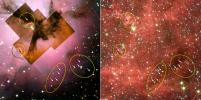
|
-
PIA07226:
-
Stellar 'Incubators' Seen Cooking up Stars
Full Resolution:
TIFF
(11.86 MB)
JPEG
(481.7 kB)
|

|
2005-02-08 |
OTS 44
|
Spitzer Space Telescope
|
|
3000x2400x3 |
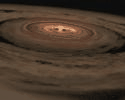
|
-
PIA07335:
-
Birth of an Unusual Planetary System (Artist Concept)

Full Resolution:
TIFF
(11.05 MB)
JPEG
(371.7 kB)
|

|
2005-02-08 |
OTS 44
|
Spitzer Space Telescope
|
|
2580x2010x3 |
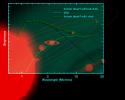
|
-
PIA07336:
-
'Mini-Me' Solar System (Artist Concept)
Full Resolution:
TIFF
(6.098 MB)
JPEG
(386.3 kB)
|

|
2005-02-08 |
OTS 44
|
Spitzer Space Telescope
|
IRAC
|
2580x2010x3 |
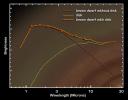
|
-
PIA07337:
-
Planetary Building Blocks Found in Surprising Place
Full Resolution:
TIFF
(5.46 MB)
JPEG
(248.6 kB)
|

|
2005-02-11 |
Ring Nebula
|
Spitzer Space Telescope
|
IRAC
|
2104x1726x3 |
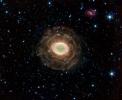
|
-
PIA07343:
-
Ring Beholds a Delicate Flower

Full Resolution:
TIFF
(7.244 MB)
JPEG
(304.1 kB)
|

|
2005-03-01 |
|
Spitzer Space Telescope
|
Infrared Spectrograph (IRS)
|
2647x1958x3 |
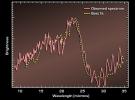
|
-
PIA07395:
-
Fingerprints in the Light
Full Resolution:
TIFF
(3.413 MB)
JPEG
(283.3 kB)
|

|
2005-03-01 |
|
Spitzer Space Telescope
|
|
3000x2400x3 |
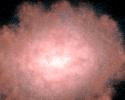
|
-
PIA07396:
-
Invisible Galaxies Come to Life! (Artist Concept)

Full Resolution:
TIFF
(18.75 MB)
JPEG
(578.1 kB)
|

|
2005-03-22 |
|
Spitzer Space Telescope
|
|
2783x1739x3 |
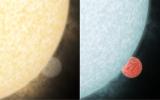
|
-
PIA07490:
-
Blinded by the Light (Artist Concept)
Full Resolution:
TIFF
(11.48 MB)
JPEG
(252.5 kB)
|

|
2005-03-22 |
|
Spitzer Space Telescope
|
IRAC
Multiband Imaging Photometer (MIPS)
|
2220x2374x3 |

|
-
PIA07491:
-
The Language of Planetary Light
Full Resolution:
TIFF
(6.72 MB)
JPEG
(358 kB)
|

|
2005-04-18 |
RCW 79
|
Spitzer Space Telescope
|
IRAC
|
2440x2440x3 |
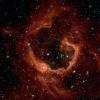
|
-
PIA07841:
-
A Bubble Bursts
Full Resolution:
TIFF
(17.88 MB)
JPEG
(657.5 kB)
|

|
2005-04-20 |
HD 69830
|
Spitzer Space Telescope
|
Infrared Spectrograph (IRS)
|
2766x2019x3 |
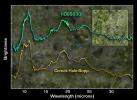
|
-
PIA07852:
-
Super-Comet or Big Asteroid Belt?
Full Resolution:
TIFF
(16.75 MB)
JPEG
(375.2 kB)
|

|
2005-04-20 |
HD 69830
|
Spitzer Space Telescope
|
|
3200x2400x3 |
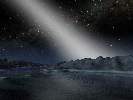
|
-
PIA07853:
-
Alien Asteroid Belt Compared to our Own (Artist Concept)

Full Resolution:
TIFF
(23.04 MB)
JPEG
(451.6 kB)
|

|
2005-04-20 |
HD 69830
|
Spitzer Space Telescope
|
|
3000x2400x3 |
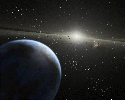
|
-
PIA07854:
-
Band of Rubble (Artist Concept)

Full Resolution:
TIFF
(21.6 MB)
JPEG
(350.6 kB)
|

|
2005-08-03 |
AMS08
|
Spitzer Space Telescope
|
IRAC
MIPS
Very Large Array (VLA)
|
2099x2100x3 |
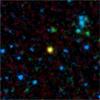
|
-
PIA08001:
-
Gorilla Black Hole in the Mist
Full Resolution:
TIFF
(13.24 MB)
JPEG
(199.6 kB)
|

|
2005-05-30 |
Carina Nebula
|
Spitzer Space Telescope
|
IRAC
|
6614x5196x3 |
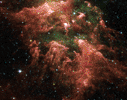
|
-
PIA03515:
-
All Pillars Point to Eta

Full Resolution:
TIFF
(103.1 MB)
JPEG
(3.749 MB)
|

|
2005-06-10 |
Cassiopeia A
|
Spitzer Space Telescope
|
IRAC
|
2826x774x3 |

|
-
PIA03517:
Dead Star Rumbles
Full Resolution:
TIFF
(6.562 MB)
JPEG
(138.9 kB)
|

|
2005-06-10 |
Cassiopeia A
|
Spitzer Space Telescope
|
IRAC
|
2842x1622x3 |
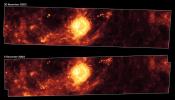
|
-
PIA03518:
-
A Year in the Life of an Infrared Echo
Full Resolution:
TIFF
(13.83 MB)
JPEG
(301.2 kB)
|

|
2006-01-11 |
G29-38
|
Spitzer Space Telescope
|
Infrared Spectrometer (IRS)
|
3000x2400x3 |
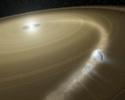
|
-
PIA03652:
-
Comet 'Bites the Dust' Around Dead Star (Artist Concept)
Full Resolution:
TIFF
(21.6 MB)
JPEG
(298.4 kB)
|

|
2005-10-13 |
M31
|
Spitzer Space Telescope
|
MIPS
|
8193x2410x3 |

|
-
PIA03031:
-
Amazing Andromeda in Red
Full Resolution:
TIFF
(19.75 MB)
JPEG
(3.247 MB)
|

|
2005-10-20 |
|
Spitzer Space Telescope
|
|
3000x2400x3 |
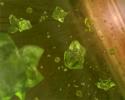
|
-
PIA03048:
-
Sowing the Seeds of Planets? (Artist's Concept)
Full Resolution:
TIFF
(21.6 MB)
JPEG
(301.7 kB)
|

|
2005-10-27 |
|
Spitzer Space Telescope
|
IRAC
|
561x561x3 |
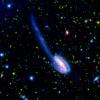
|
-
PIA03543:
-
A SWIRE Picture is Worth Billions of Years
Full Resolution:
TIFF
(945.5 kB)
JPEG
(39.8 kB)
|

|
2005-10-28 |
|
Spitzer Space Telescope
|
IRAC
|
1600x1600x3 |
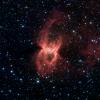
|
-
PIA03544:
-
Black Widow Nebula Hiding in the Dust
Full Resolution:
TIFF
(7.693 MB)
JPEG
(323.3 kB)
|

|
2005-11-09 |
|
Spitzer Space Telescope
|
IRAC
|
3426x2548x3 |
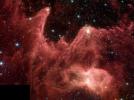
|
-
PIA03096:
-
Towering Infernos
Full Resolution:
TIFF
(26.19 MB)
JPEG
(900.3 kB)
|

|
2005-11-15 |
Perseus
|
Spitzer Space Telescope
|
IRAC
|
1291x1663x3 |

|
-
PIA03545:
-
Chaotic Star Birth
Full Resolution:
TIFF
(6.448 MB)
JPEG
(257.1 kB)
|

|
2005-12-01 |
|
Spitzer Space Telescope
|
IRAC
|
848x711x3 |
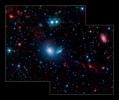
|
-
PIA03605:
-
Dwarf Galaxies Swimming in Tidal Tails
Full Resolution:
TIFF
(1.811 MB)
JPEG
(60.3 kB)
|

|
2005-12-13 |
Milky Way
|
Spitzer Space Telescope
|
IRAC
|
27000x6000x3 |

|
-
PIA03239:
A Glimpse of the Milky Way
Full Resolution:
TIFF
(486 MB)
JPEG
(37.05 MB)
|